If you’re looking for a design style that prioritises simplicity, cleanliness, and functionality, Japanese minimalist interior design might be just what you need. Inspired by traditional Zen Buddhism, this aesthetic aims to create spaces that are uncluttered and serene, while still being functional and beautiful.

At its core, Japanese minimalism is all about living with just the essentials. This means paring down your possessions to only the things you truly need and love, and creating a space that feels open and uncluttered. To achieve this, Japanese minimalist design often incorporates natural materials like wood and stone, as well as simple, clean lines and neutral colours.
One of the key principles of Japanese minimalist design is the idea of “mu”, or emptiness. This doesn’t mean creating a space that’s completely devoid of furniture or decor, but rather choosing pieces that are functional and beautiful in their simplicity. By embracing this philosophy, you can create a space that’s both calming and inviting, and that truly reflects your personality and values.
Key Takeaways
- Japanese minimalist interior design prioritises simplicity, cleanliness, and functionality.
- This aesthetic incorporates natural materials, clean lines, and neutral colours.
- The key principle of Japanese minimalism is the idea of “mu”, or emptiness, which emphasises the importance of choosing functional and beautiful pieces.
Origins of Japanese Minimalist Design
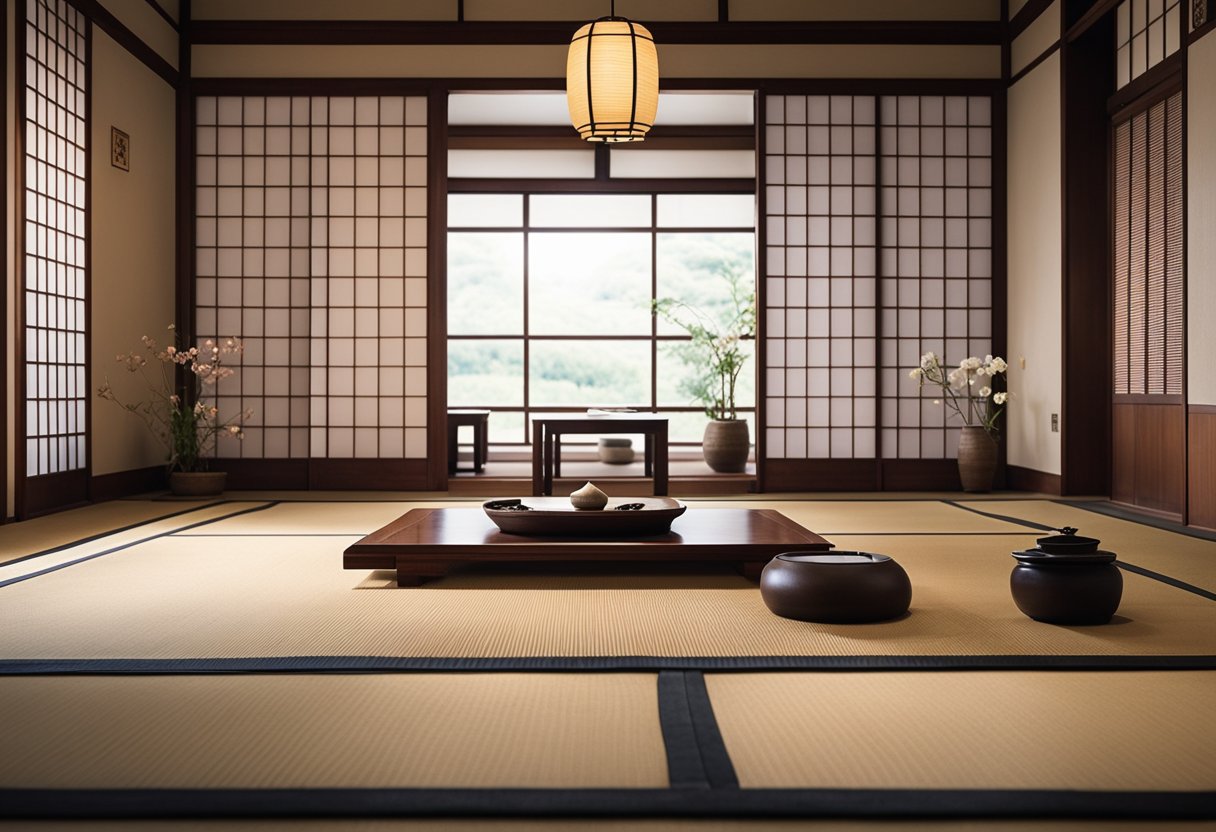
If you are interested in interior design, you may have heard of Japanese minimalism. This design style is characterised by its simplicity, functionality, and emphasis on natural materials. However, you may be wondering where this style originated from. In this section, we will explore the origins of Japanese minimalist design.
Influence of Zen Buddhism
One of the major influences on Japanese minimalism is Zen Buddhism. This philosophy emphasises the importance of simplicity, tranquillity, and the beauty of imperfection. Zen Buddhism has had a significant impact on Japanese culture and aesthetics, including design. The principles of Zen Buddhism are reflected in the minimalist design of Japanese homes, which are characterised by their clean lines, open spaces, and lack of clutter.
Japanese Culture and Aesthetics
Japanese culture and aesthetics have also played a significant role in the development of Japanese minimalism. The Japanese have a long tradition of valuing simplicity and minimalism, which is reflected in their art, architecture, and design. For example, the concept of wabi-sabi, the acceptance of imperfection and transience, is an important part of Japanese culture and aesthetics. This concept is reflected in Japanese minimalist design, which often features natural materials, such as wood and stone, and simple, unadorned surfaces.
Scandinavian Design Integration
In recent years, there has been a trend towards integrating Scandinavian design with Japanese minimalism. This trend, known as Japandi, takes the best of both design traditions and combines them to create a unique and modern aesthetic. Scandinavian design is characterised by its simplicity, functionality, and use of natural materials, making it a natural fit with Japanese minimalism. The result is a design style that is both minimalist and warm, with a focus on natural materials and clean lines.
In summary, the origins of Japanese minimalism can be traced back to the influence of Zen Buddhism, Japanese culture and aesthetics, and the recent integration of Scandinavian design. These influences have come together to create a design style that is both simple and beautiful, with a focus on natural materials and clean lines.
Fundamental Principles
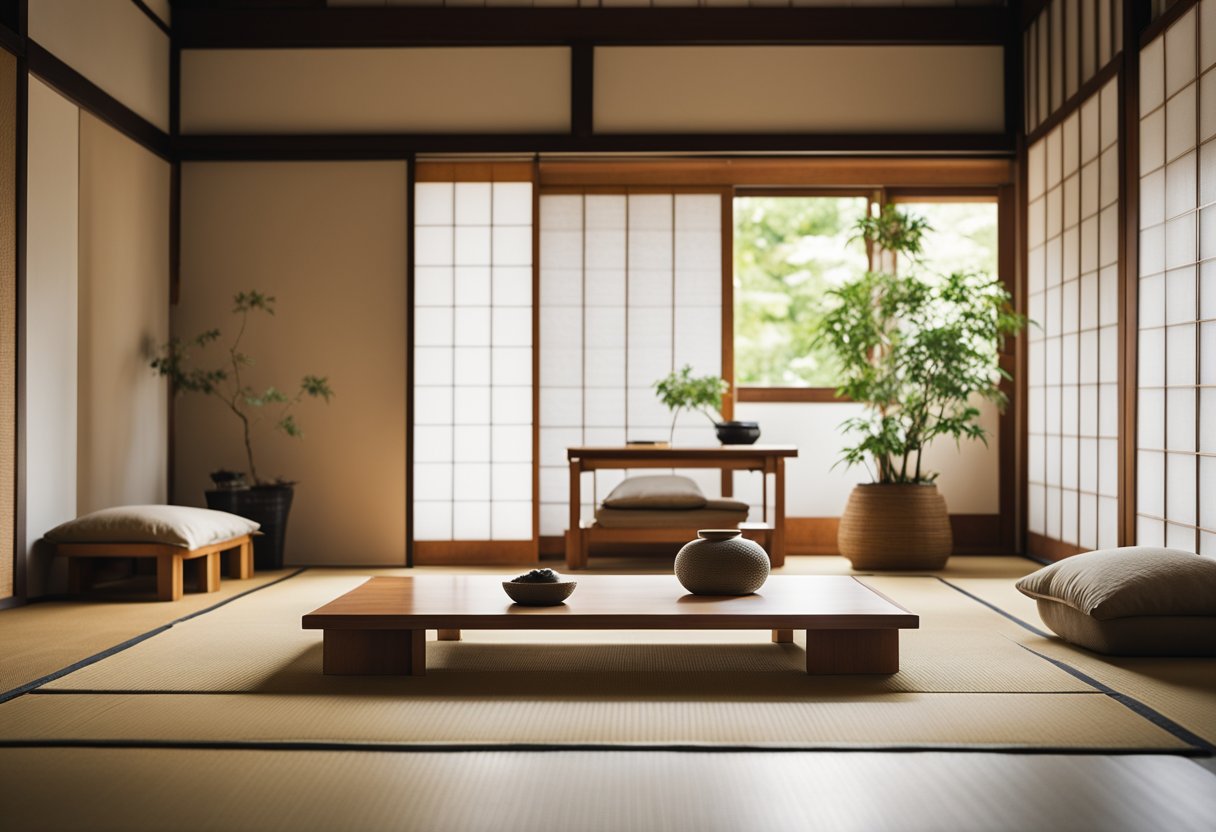
When it comes to Japanese minimalist interior design, there are a few fundamental principles that you should keep in mind. These principles revolve around simplicity, functionality, natural materials and textures, and a neutral colour palette.
Simplicity and Functionality
Simplicity and functionality are at the heart of Japanese minimalist interior design. The idea is to create a space that is both beautiful and practical. This means that you should focus on the essentials and eliminate anything that is unnecessary or cluttered.
One way to achieve simplicity and functionality is by using multifunctional furniture. For example, a sofa bed can serve as both a seating area and a sleeping area. This not only saves space, but it also adds to the overall aesthetic of the room.
Natural Materials and Textures
Another key aspect of Japanese minimalist interior design is the use of natural materials and textures. This includes materials such as wood, bamboo, and stone. These materials add warmth and texture to a space, which can make it feel more inviting and comfortable.
When choosing materials, it’s important to keep in mind the principles of balance and harmony. This means that you should choose materials that complement each other and create a cohesive look. For example, you might choose a wooden coffee table to complement a bamboo floor.
Neutral Colour Palette
Finally, a neutral colour palette is essential to Japanese minimalist interior design. This means using colours such as white, beige, and grey to create a calm and serene environment. These colours also allow natural elements, such as wood and bamboo, to stand out and take centre stage.
When choosing colours, it’s important to keep in mind the principles of balance and harmony. This means that you should choose colours that complement each other and create a cohesive look. For example, you might choose a beige sofa to complement a grey wall.
In summary, Japanese minimalist interior design is all about creating a space that is both beautiful and practical. By focusing on simplicity, functionality, natural materials and textures, and a neutral colour palette, you can create a space that is calm, comfortable, and inviting.
Design Elements
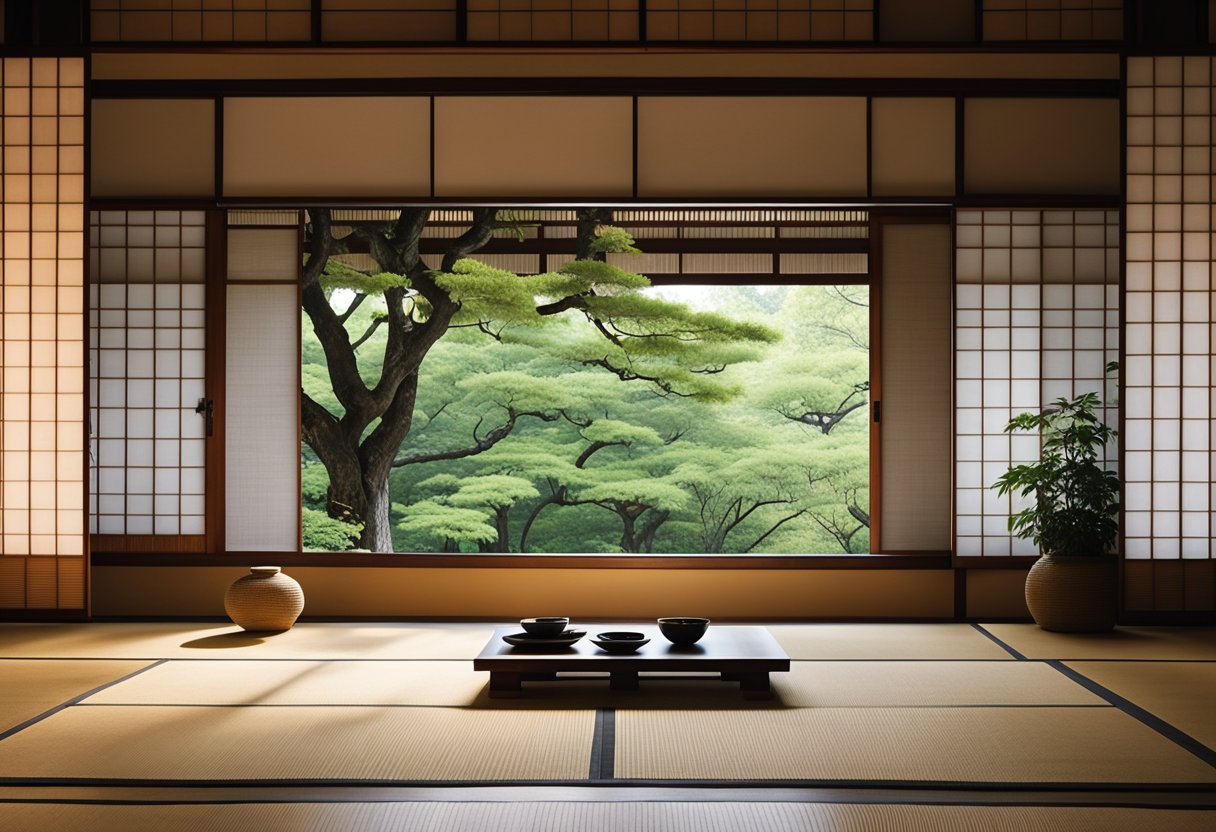
When it comes to Japanese minimalist interior design, there are several key design elements that you should keep in mind. These elements include clean lines and open spaces, incorporation of natural light, and the use of greenery and plants.
Clean Lines and Open Spaces
One of the hallmarks of Japanese minimalist interior design is the use of clean lines and open spaces. This means that you should avoid clutter and unnecessary decorations, and instead focus on creating a space that is simple and uncluttered. Consider using furniture with simple, clean lines, and avoid anything that is too ornate or elaborate.
Incorporation of Natural Light
Another important design element in Japanese minimalist interior design is the incorporation of natural light. Large windows are a common feature in Japanese architecture, and they can help to create a sense of openness and spaciousness in your home. Natural light can also help to improve your mood and increase your productivity, so it’s definitely worth considering when designing your space.
Use of Greenery and Plants
Finally, the use of greenery and plants is another important element of Japanese minimalist interior design. Adding some greenery to your space can help to create a calming and relaxing atmosphere, and it can also help to purify the air. Consider adding some indoor plants to your space, such as bamboo or a small bonsai tree. These plants are not only beautiful, but they are also easy to care for and can thrive in a variety of conditions.
Overall, Japanese minimalist interior design is all about simplicity, openness, and natural beauty. By incorporating these design elements into your home, you can create a space that is both calming and inspiring.
Furnishing and Decor
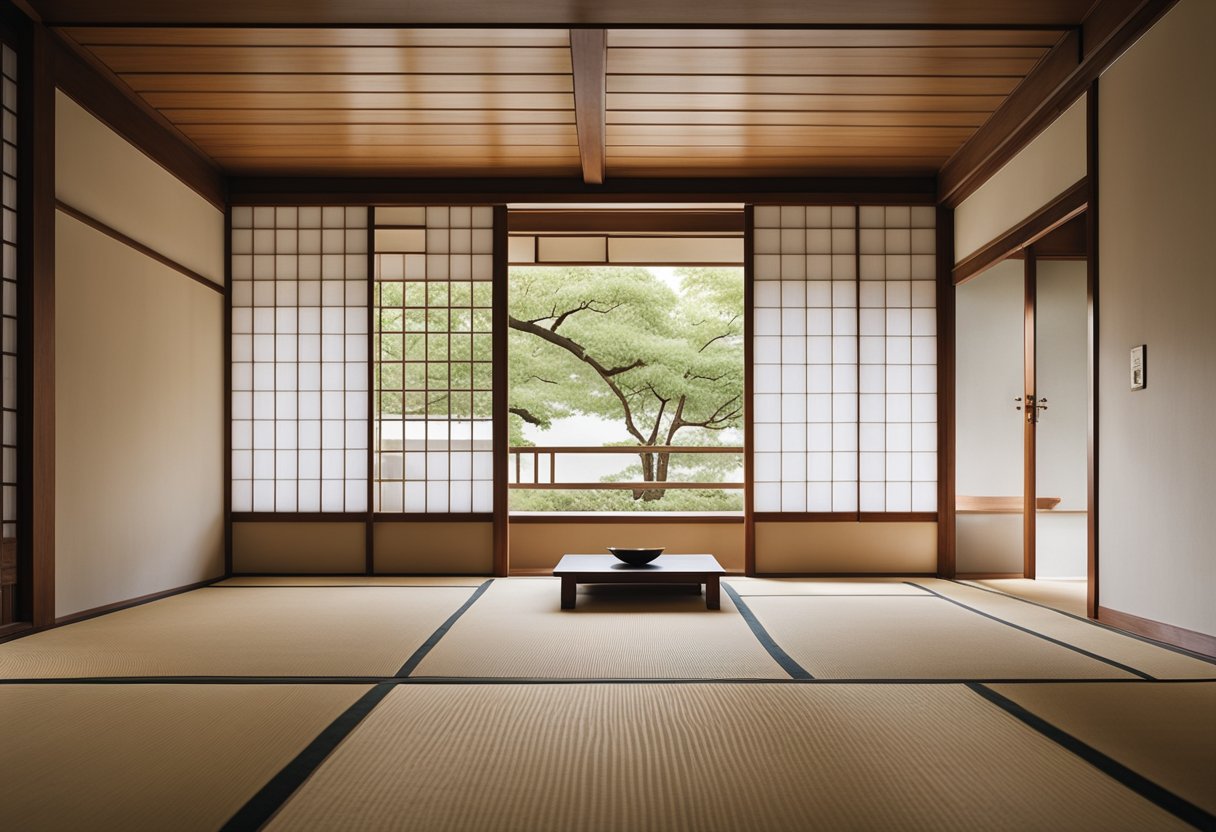
When it comes to Japanese minimalist interior design, the right furnishings and decor can make all the difference. Here are some key elements to keep in mind:
Handmade Craftsmanship
In Japanese minimalist design, there is a deep appreciation for the art of handmade craftsmanship. This means that you should look for pieces that are lovingly made by skilled artisans. Whether it’s a hand-carved wooden cabinet or a hand-woven rug, these pieces will add a touch of warmth and character to your space.
Minimalist Furniture Choices
When it comes to furniture, less is definitely more in Japanese minimalist design. Look for pieces that are simple and streamlined, with clean lines and a lack of ornamentation. This will help to create a serene and uncluttered atmosphere in your home.
Japanese Decorative Techniques
Japanese decorative techniques are all about finding beauty in imperfection. This means embracing natural materials like wood and stone, and celebrating their unique textures and patterns. Consider adding a shibori-dyed throw pillow or a hand-painted ceramic vase to your space to bring a touch of Japanese flair to your minimalist interior.
Overall, the key to creating a beautiful Japanese minimalist interior is to focus on quality over quantity. By choosing handmade pieces, minimalist furniture, and Japanese decorative techniques, you can create a serene and inviting space that will be a joy to live in.
Spatial Organisation
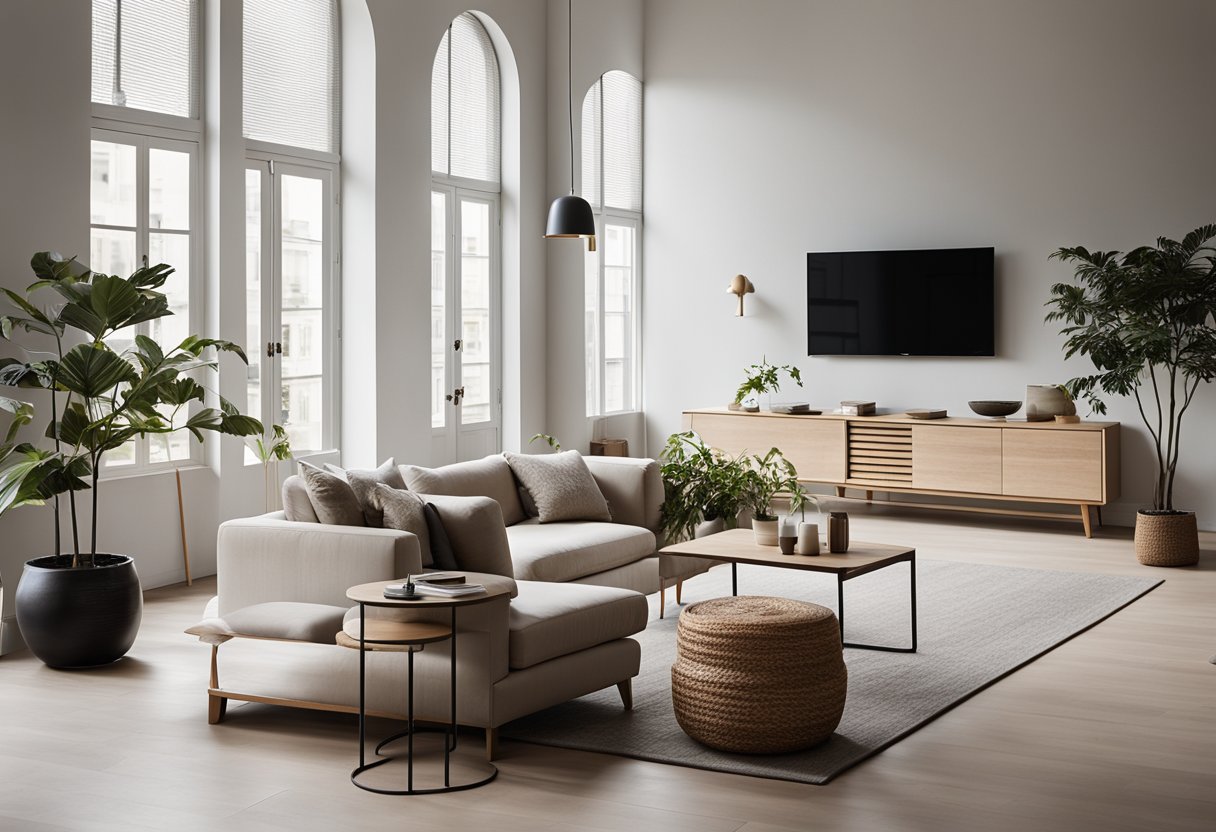
When it comes to Japanese minimalist interior design, spatial organisation is key. Creating a functional layout and using dividers to separate different areas of your home can help you achieve a clutter-free environment that is both practical and aesthetically pleasing.
Functional Layouts and Dividers
One of the main principles of Japanese minimalist design is to keep things simple and functional. This means that you should carefully consider the layout of each room in your home and how you can use the space to its fullest potential. By using dividers such as wooden room dividers or screens, you can create separate areas for different activities, such as a workspace or a relaxation area.
Decluttering and Storage Solutions
Decluttering is another important aspect of Japanese minimalist design. By getting rid of unnecessary items and keeping only what you need, you can create a more peaceful and calming environment. To help you achieve this, consider investing in storage solutions such as built-in shelves or cabinets, which can help you keep your belongings organised and out of sight.
Traditional Japanese Architectural Features
In addition to using room dividers and storage solutions, you can also incorporate traditional Japanese architectural features into your home to create a truly authentic Japanese minimalist design. For example, shoji screens and sliding doors made from rice paper can help you create a sense of privacy and separation between rooms, while tatami mats can add a touch of warmth and texture to your floors.
Overall, by carefully considering the layout of your home, using dividers and storage solutions to keep things organised, and incorporating traditional Japanese architectural features, you can create a beautiful and functional space that is both minimalist and authentic to Japanese design principles.
Integrating Nature and Serenity
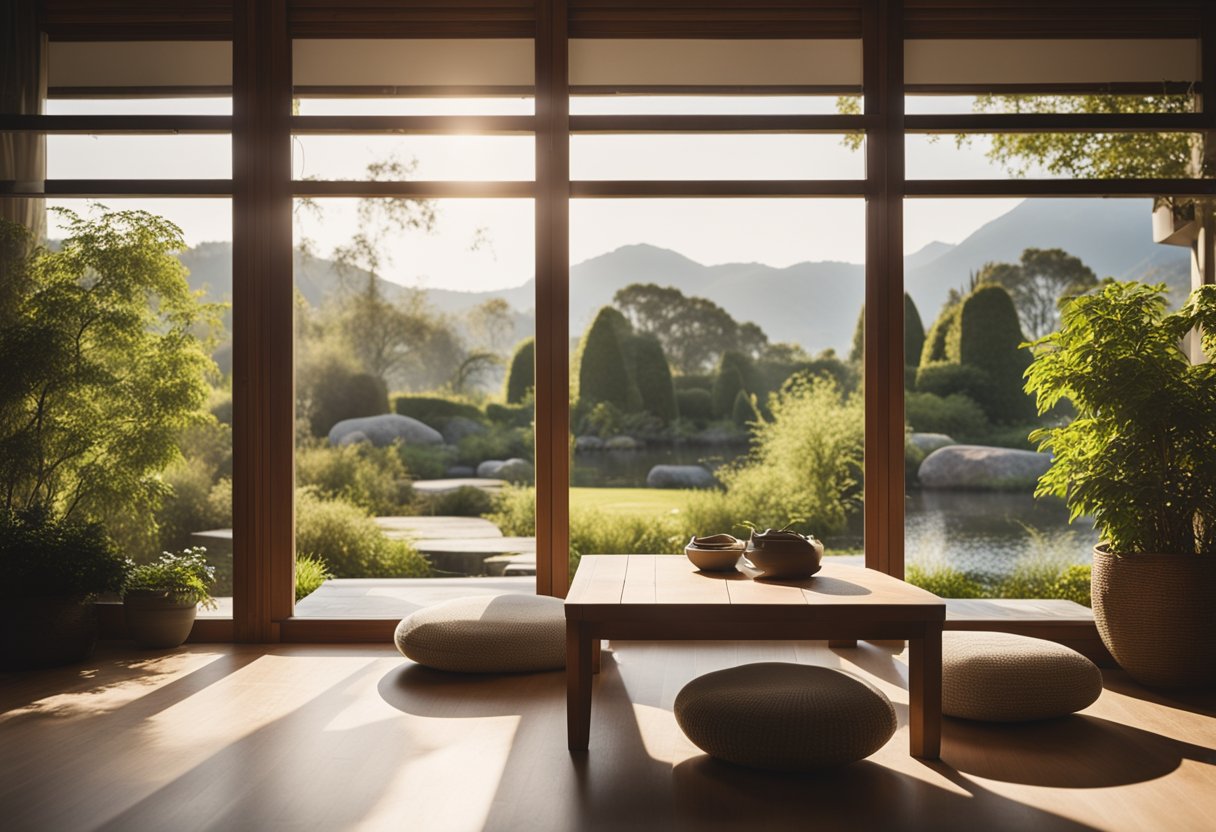
Japanese minimalist interior design is all about creating spaces that are serene, calming, and inviting. One of the key principles of this design style is integrating nature into the interior space. Here are some ways you can incorporate nature and serenity into your home.
Influence of Natural Scenery
Japanese minimalist interior design is heavily influenced by natural scenery. The use of natural materials like wood, bamboo, and stone is prevalent in this design style. You can incorporate these materials into your home by using wooden flooring, bamboo blinds, and stone tiles. These materials connect the interior with the natural world, fostering a sense of serenity.
Indoor-Outdoor Flow
Indoor-outdoor flow is another important aspect of Japanese minimalist interior design. Large glass doors and sky-lights can create a seamless transition between the interior and exterior spaces. This allows natural light to flood into the interior space, creating a bright and airy atmosphere.
Zen Gardens and Bonsai
Zen gardens and bonsai trees are iconic elements of Japanese minimalist interior design. These miniature gardens and trees can add a touch of nature and serenity to any space. You can create your own zen garden by using rocks, sand, and miniature plants. Bonsai trees can be used as a focal point in any room, adding a touch of greenery and serenity.
Incorporating nature and serenity into your home is an important aspect of Japanese minimalist interior design. By using natural materials, creating an indoor-outdoor flow, and incorporating zen gardens and bonsai trees, you can create a space that is calming, inviting, and serene.
Cultural Significance and Modern Adaptation
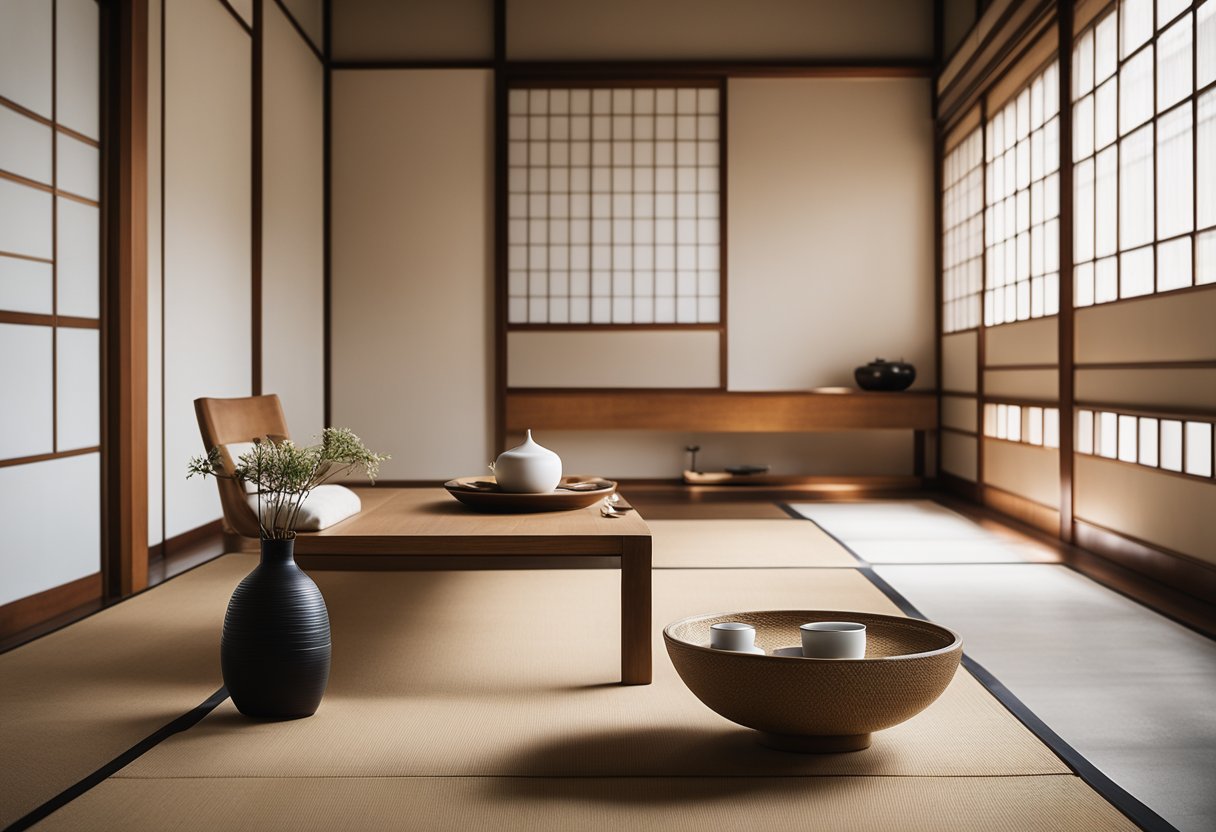
If you’re looking for a design style that prioritises simplicity, functionality, and beauty, then Japanese minimalist interior design might be just what you need. This design style has a long history in Japanese culture, and it has recently been adapted and combined with Scandinavian design to create a new trend called Japandi.
Wabi-Sabi and Imperfection
One of the key concepts in Japanese minimalist interior design is wabi-sabi, which is the idea that imperfection can be beautiful. This concept has its roots in Japanese tea ceremonies, where the focus is on the experience of the moment rather than the perfection of the objects used. In Japanese minimalist interiors, this translates into a focus on natural materials, such as wood and stone, and a preference for handmade objects with visible imperfections.
Japandi: A Blend of Cultures
Japandi is a new trend that combines Japanese minimalist interior design with Scandinavian design. This trend has become popular because it blends the warmth and cosiness of hygge with the simplicity and functionality of Japanese design. In Japandi interiors, you’ll find a focus on natural materials, such as wood and linen, and a preference for neutral colours, such as white, grey, and beige. Furniture and accessories are kept to a minimum, and the emphasis is on creating a calm and relaxing space.
Contemporary Minimalist Trends
In recent years, minimalist design has become increasingly popular, especially in urban areas where space is at a premium. Japanese minimalist interior design is a perfect fit for this trend, as it prioritises functionality and simplicity. Many contemporary minimalist interiors take inspiration from Japanese design, with a focus on natural materials, clean lines, and uncluttered spaces. Sustainability is also an important consideration, with many designers using recycled and eco-friendly materials.
Overall, Japanese minimalist interior design is a timeless style that has been adapted and evolved to suit modern tastes. Whether you’re looking for a calming and relaxing space or a functional and practical home, this design style has something to offer.
Frequently Asked Questions
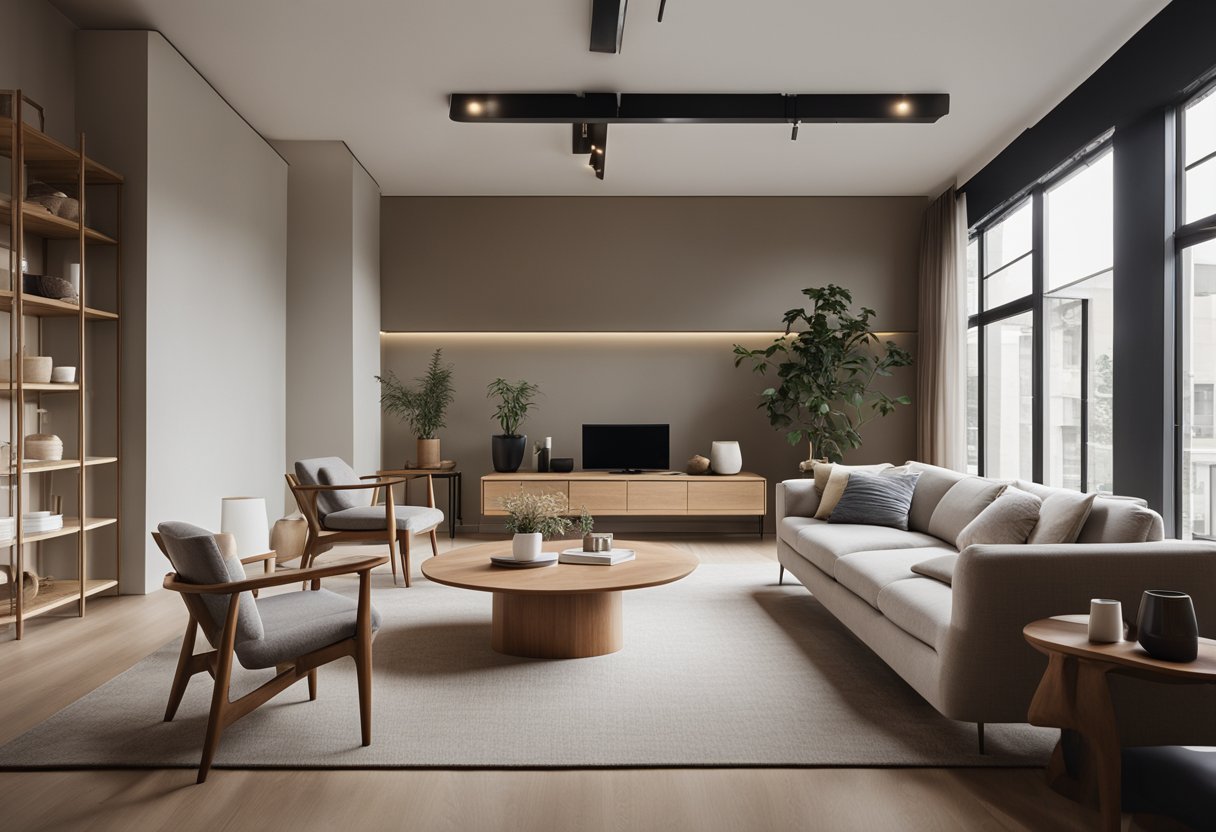
How can I incorporate the principles of wabi-sabi into my home decor?
Wabi-sabi is a Japanese aesthetic concept that celebrates the beauty of imperfection, simplicity, and natural materials. To incorporate this principle into your home decor, you can start by decluttering and simplifying your space. Embrace the natural beauty of wood, bamboo, and stone, and choose items that are imperfect and have a sense of authenticity. You can also add natural elements like plants and flowers to bring a sense of life and vitality to your space.
What are the essential elements of a Japanese minimalist living room?
A Japanese minimalist living room typically features a simple and uncluttered layout, with a focus on natural materials and neutral colours. Essential elements include low furniture, such as a low coffee table and floor cushions, to create a relaxed and informal atmosphere. Shoji screens and sliding doors are also iconic elements of Japanese interiors, and can be used to divide the space or provide privacy. Finally, a Japanese minimalist living room should have plenty of natural light and a connection to nature, whether through large windows or a view of a garden.
How does modern Japanese interior design differ from traditional styles?
Modern Japanese interior design still embraces the principles of simplicity, natural materials, and a connection to nature, but it also incorporates modern elements such as technology and contemporary art. Modern Japanese interiors may also feature brighter colours and bolder patterns, while still maintaining a sense of calm and serenity.
What are some tips for achieving a minimalist exterior in line with Japanese aesthetics?
To achieve a minimalist exterior in line with Japanese aesthetics, focus on simplicity, natural materials, and a connection to nature. Use natural materials such as wood, stone, and bamboo for your exterior finishes, and choose a neutral colour palette. Embrace the beauty of simplicity by keeping your landscaping simple and uncluttered, with a focus on natural elements such as rocks, water, and plants.
Can you suggest ways to blend minimalism and comfort in interior design?
To blend minimalism and comfort in interior design, focus on creating a warm and inviting atmosphere with soft textures and subtle details. Choose comfortable furniture with clean lines, and add soft textiles such as cushions, throws, and rugs. Embrace the beauty of natural materials, such as wood and wool, to create a sense of warmth and comfort.
Who are some renowned Japanese interior designers known for minimalist concepts?
Some renowned Japanese interior designers known for minimalist concepts include Naoko Horibe, Shinichi Ogawa, and Tadao Ando. These designers are known for their use of natural materials, clean lines, and simple yet elegant designs.


